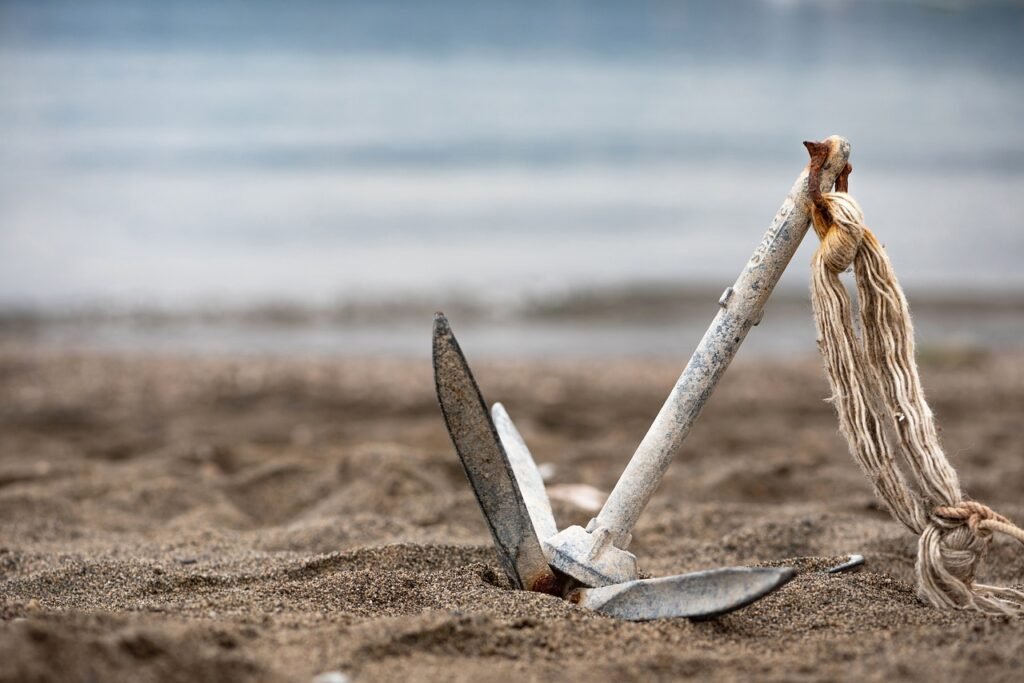When it comes to kayaking, anchoring techniques are essential for maintaining stability and control in various water conditions. Whether you’re fishing, taking a break, or simply enjoying the scenery, a reliable anchor is crucial. In this article, we will explore the different types of kayak anchors, how to choose the right one for your kayak, various anchoring techniques, and important safety tips.
Types of Kayak Anchors
There are several types of kayak anchors available, each with its own advantages and considerations:
1. Grapnel Anchors
Grapnel anchors are the most common type used by kayakers. They consist of multiple flukes or prongs that grip the bottom surface. Grapnel anchors are lightweight, compact, and ideal for shallow waters or areas with rocky or weedy bottoms.
2. Folding Anchors
Folding anchors are designed for easy storage and transport. They typically have four flukes that fold flat, making them convenient for kayakers who have limited space. Folding anchors are suitable for various bottom conditions, including sand, mud, and gravel.
The Gradient Fitness Marine Anchor is a brilliant, convenient and durable anchor for any condition.
3. Claw Anchors
Claw anchors, also known as Bruce anchors, have a claw-like design that provides excellent holding power. They are effective in different bottom types, including sand, mud, and grass. Claw anchors are heavier than grapnel or folding anchors, making them more suitable for larger kayaks or when stronger holding power is required.
4. Mushroom Anchors
Mushroom anchors are compact and have a rounded shape, resembling a mushroom. They are commonly used in calm waters, such as lakes or ponds, where strong currents or winds are not a concern. Mushroom anchors are lightweight and easy to handle, making them a popular choice for recreational kayakers.
Choosing the Right Anchor for Your Kayak
When selecting an anchor for your kayak, consider the following factors:
1. Kayak Size and Weight
The size and weight of your kayak will determine the appropriate anchor size. Larger kayaks may require heavier anchors for better stability.
2. Water Conditions
Consider the typical water conditions you will encounter. If you frequently paddle in windy or rough waters, you’ll need an anchor with better holding power.
3. Bottom Type
Understand the bottom composition of the areas you plan to kayak in. Different anchors perform better in various bottom types, such as sand, mud, rocks, or grass.
4. Ease of Use
Choose an anchor that is easy to deploy and retrieve, as well as one that suits your kayaking style. Consider factors such as weight, size, and storage space.
Different Anchoring Techniques
There are several anchoring techniques you can employ depending on the situation:
1. Single Point Anchoring
This technique involves dropping the anchor straight down from the kayak’s bow or stern. It is useful when you want to stay in one spot without drifting.
2. Double Point Anchoring
Double point anchoring involves deploying two anchors from the bow and stern of the kayak. It provides better stability and minimizes drifting, making it suitable for fishing or staying in one spot for an extended period.
3. Drift Chute or Sea Anchor
A drift chute or sea anchor is a parachute-like device that slows down the kayak’s drift in strong currents or winds. It can be useful when you want to control your kayak’s speed or maintain a specific position.
The Drift Sock Sea Anchor Drogue is a great choice of drift chute for kayaks.
Safety Tips and Best Practices
When anchoring your kayak, keep the following safety tips in mind:
1. Anchor Trolley System
Consider installing an anchor trolley system on your kayak. It allows you to adjust the anchor position easily and prevents capsizing in strong currents.
2. Proper Anchor Line Length
Ensure your anchor line is long enough to reach the bottom while leaving sufficient slack to accommodate changes in water depth or tide.
3. Securely Attach the Anchor
Always double-check that your anchor is securely attached to your kayak before deploying it. A loose anchor can lead to accidents or loss of equipment.
4. Be Mindful of Surroundings
When anchoring, be aware of your surroundings, including other boaters, obstacles, and potential hazards. Avoid anchoring in high-traffic areas or near submerged objects.
5. Practice Anchoring Techniques
Before heading out on the water, practice anchoring techniques in a controlled environment. Familiarize yourself with the process to ensure a smooth experience when you’re out on the water.
6. Regularly Inspect Equipment
Inspect your anchor and anchor line regularly for any signs of wear or damage. Replace any worn-out or damaged equipment to maintain optimal safety.
Mastering kayak anchoring techniques is crucial for any kayaker. By understanding the different types of anchors, choosing the right one for your kayak, and employing the appropriate anchoring techniques, you can enhance your overall kayaking experience while ensuring safety and stability on the water. Remember to always prioritize safety and follow best practices to make the most of your kayaking adventures.

